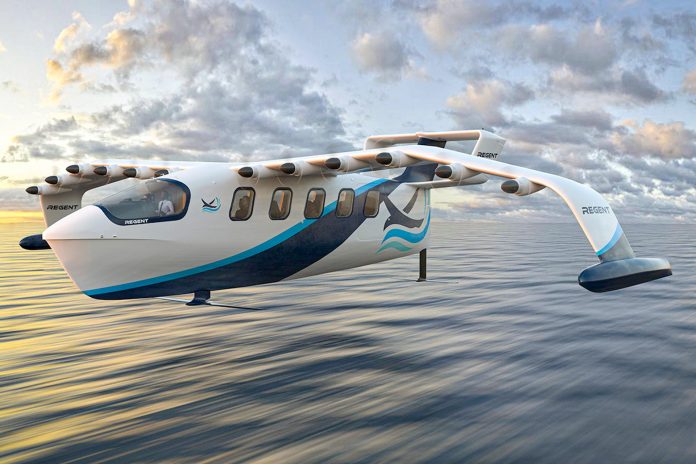A Rhode Island-based startup has marked a significant milestone in coastal transportation by successfully testing its full-size electric seaglider with real passengers. The test was conducted with a prototype that measures 55 feet in length and boasts a 65-foot wingspan. The seaglider takes advantage of what’s called the wing-in-ground-effect—a principle that allows a winged vehicle to experience reduced aerodynamic drag when flying close to a surface, such as water.
The seaglider, named the Viceroy, is engineered to operate in three distinct modes. It can float on its hull, rise above the water on hydrofoils, or travel in ground effect at ultra-low altitudes of just 30 to 60 feet above the surface. This flexibility makes it a versatile option for various maritime applications. According to the company, the vessel is designed to carry 12 passengers and two crew members or transport up to 3,500 pounds (1,600 kg) of cargo, with a planned cruise speed of 180 mph (300 km/h) over a distance of at least 180 miles (300 km).
Approval from the U.S. Coast Guard was secured last September to run tests on the full-size prototype, which is the same size as the production version expected in the near future. The recent test follows several months of rigorous trials of critical onboard systems, including motors, batteries, and vehicle control software, after years of development. The company initially built and flew a quarter-scale prototype over a two-year period before advancing to this full-size version.
Founded in 2020, the startup is now progressing towards fulfilling a substantial market opportunity. The company has already secured orders totaling more than $9 billion from various regions around the world. In addition, the vessel’s design is being considered for multiple applications, such as ferrying tourists between tropical islands, transporting cargo, and providing support in emergency response situations. The startup is also collaborating with the U.S. Marine Corps to explore maritime defense and logistics applications for the seaglider.

Plans are underway for the construction of a large manufacturing facility in Rhode Island, slated to open next year, which will support production and crew training. With the successful test of the full-size prototype, the electric seaglider is one step closer to joining the market as a novel mode of coastal transport that could offer a new approach to regional mobility.
Source: Regent Craft



